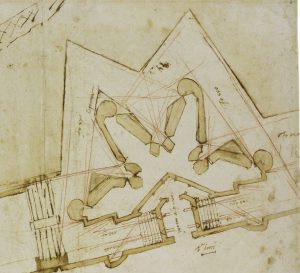Michelangelo Exhibition & Music at Casa Buonarroti
 This month Casa Buonarroti (via Ghibellina 70, Florence) invites guests to an annual event, “The Words and The Music:” in the gorgeous courtyard of the museum, people can enjoy five summer evenings of classical music starting at 9 pm.
This month Casa Buonarroti (via Ghibellina 70, Florence) invites guests to an annual event, “The Words and The Music:” in the gorgeous courtyard of the museum, people can enjoy five summer evenings of classical music starting at 9 pm.
The program commences July 7 with violinist Michael Stüve and pianist Monique Ciola playing works by Leburn, Ladurner, and Beethoven. Picking up where it left off, the program on July 12 begins with Beethoven, and continues with music by Chopin, Liszt, and Gershwin, interpreted by pianist Gregorio Nardi.
Tuesday, July 18 will be a special program featuring selections inspired by the works of Shakespeare’s Othello, The Tempest, As You Like It, and much more. The following evening show, the 25th, will be resound with 15th and 16th century music. The final performance, Saturday, July 30, will be dedicated to the memory of the Orchestra della Toscana’s first violin Andrea Tacchi, and will showcase works by composers Giuseppe Maria Cambini and Johannes Brahms.
Although performances are free, space is limited. To make a reservation, call 055/241752.
Visitors to Casa Buonarroti between 10 am and 5 pm (except Tuesday) can also tour the museum’s newest exhibition, “Michelangelo and the Capture of Florence,” open until October 2. Dedicated to the intersection between art, religion, and civic duty, the show illustrates the relevancy of artists in Renaissance political life.
For 10 months between 1529 and 1530 the city of Florence was under siege by imperial troops. Michelangelo was summoned to utilize his experience with military architecture to suggest improvements for Florence’s fortifications. Since his designs were deemed most likely to ensure victory, he was appointed Governor of Fortifications for the duration of the siege.
Twenty of his architectural plans from this era are conserved in the Casa Buonarroti. Soft-pencil sketches full of precision and energy, are a testimony to his allegiance to Florence. Considering the lack of time and resources, his work is impressive.
As guests walk into the second room, the intellectual energy morphs into the tangible reality of combat. Dedicated to those fighting on both sides, this exhibition reveals important information about how wars were conducted during this era. Swords, sheaths, armor, and Andrea del Sarto’s detailed portrayals of men in battle bring the vigor of the war to life.
The final room addresses the role of religion in this difficult period. Images of friar Girolamo Savonarola fill the space, along with Del Sarto’s “Sacred Family,” “Madonna and Child,” and “San Giovanni.”
